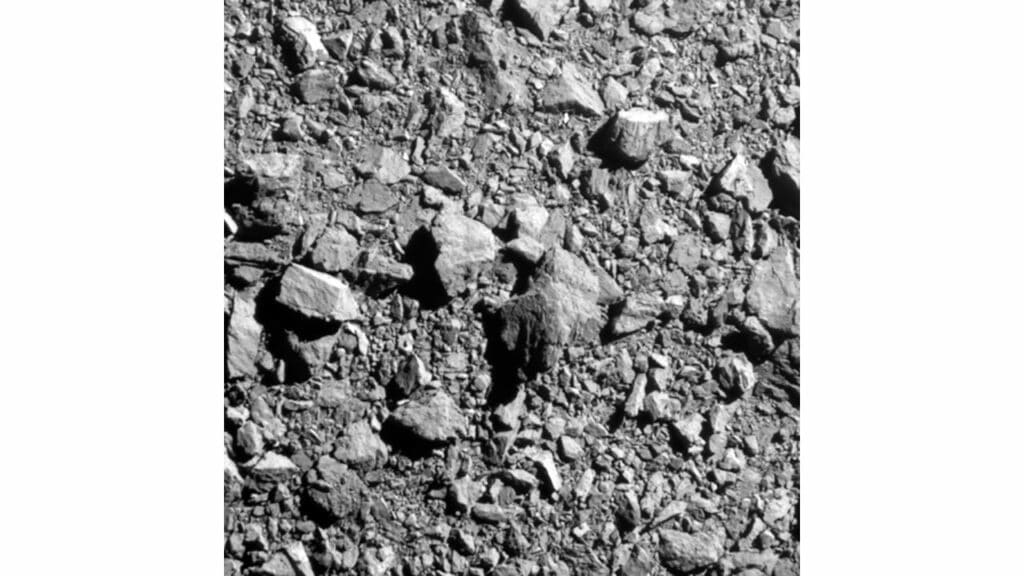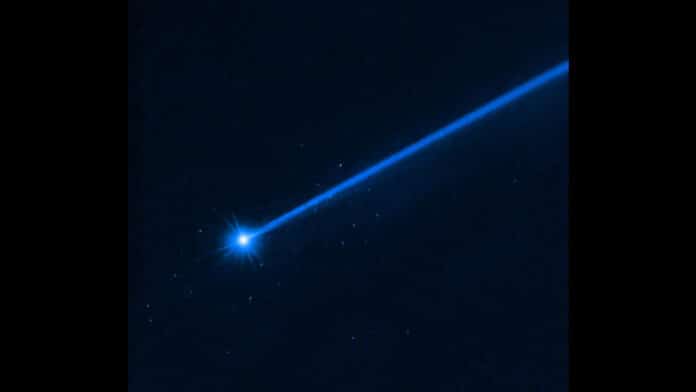NASA’s DART (Double Asteroid Redirection Test) intentionally impacted Dimorphos on September 26, 2022, slightly changing the trajectory of its orbit around the larger asteroid Didymos. The spacecraft’s kinetic impact with its target asteroid, Dimorphos, successfully altered its orbit.
A swarm of boulders may have been shaken off the asteroid when NASA purposefully slammed the half-ton DART impactor spacecraft into Dimorphos at a speed of about 14,000 miles per hour, according to astronomers utilizing Hubble’s exceptional sensitivity.
According to Hubble photometry, the 37 free-falling boulders are between three and 22 feet wide in size. They are moving away from the asteroid at just over half a mile per hour, or about the same as a huge tortoise would walk. These discovered rocks include a total mass of just 0.1% that of Dimorphos.
David Jewitt of the University of California at Los Angeles, a planetary scientist using Hubble to track changes in the asteroid during and after the DART impact, said, “This is a spectacular observation – much better than I expected. We see a cloud of boulders carrying mass and energy away from the impact target. The boulders’ numbers, sizes, and shapes are consistent with them having been knocked off the surface of Dimorphos by the impact.”
“This tells us for the first time what happens when you hit an asteroid and see material coming out up to the largest sizes. The boulders are some of the faintest things ever imaged inside our solar system.”
“This opens up a new dimension for studying the aftermath of the DART experiment using the European Space Agency’s upcoming Hera spacecraft, which will arrive at the binary asteroid in late 2026. Hera will perform a detailed post-impact survey of the targeted asteroid. “The boulder cloud will still be dispersing when Hera arrives. It’s like a very slowly expanding swarm of bees that eventually will spread along the binary pair’s orbit around the Sun.”
It’s unlikely that the boulders are shards of the little asteroid from the collision. The last close-up photo acquired by the DART spacecraft just two seconds before contact, when it was only seven miles above the surface, shows that they were already dispersed across the asteroid’s surface.
According to the calculations, the collision scattered 2% of the boulders on the asteroid’s surface. The size of the DART impact crater can also be inferred from Hubble’s observations of boulders. On Dimorphos’ surface, a circle of 160 feet in diameter (the size of a football field) could have been excavated from which the boulders were taken.

Dimorphos might have originated from debris that the larger asteroid Didymos discharged into space in the distant past. Among other things, the parent body may have spun up too quickly or may have lost material from a passing impact with another object. Dimorphos was created by the expelled material coalescing gravitationally into a ring. This would result in a loosely held-together flying pile of rocky debris held together by a weak gravitational force. As a result, the interior likely has a structure more like a bunch of grapes than one that is solid.
The method of removing the stones from the asteroid’s surface is unknown. They might be a component of the ejecta plume that Hubble and other observatories captured on camera. A seismic wave from the impact may have rattled through the asteroid, shattering the surface debris like a hammer striking a bell.
Jewitt said, “If we follow the boulders in future Hubble observations, then we may have enough data to pin down the boulders’ precise trajectories. And then we’ll see in which directions they were launched from the surface.”
